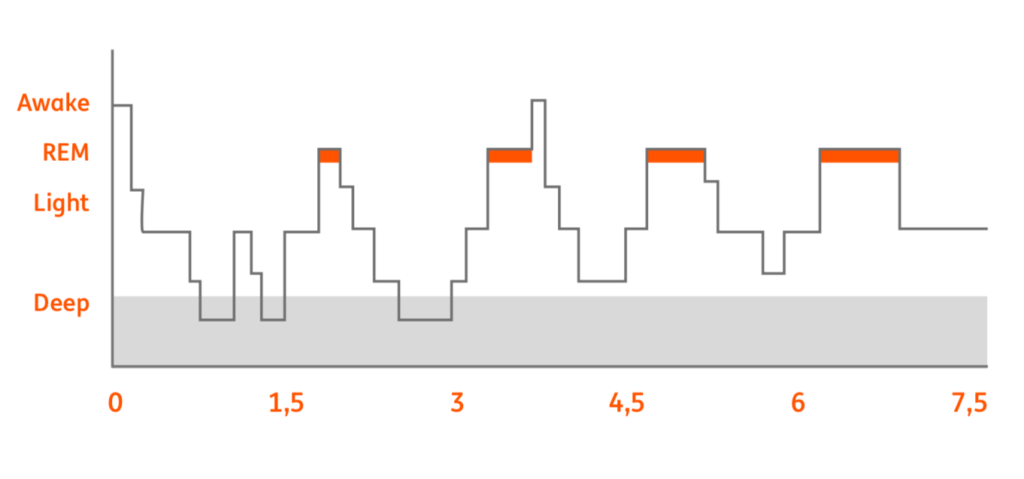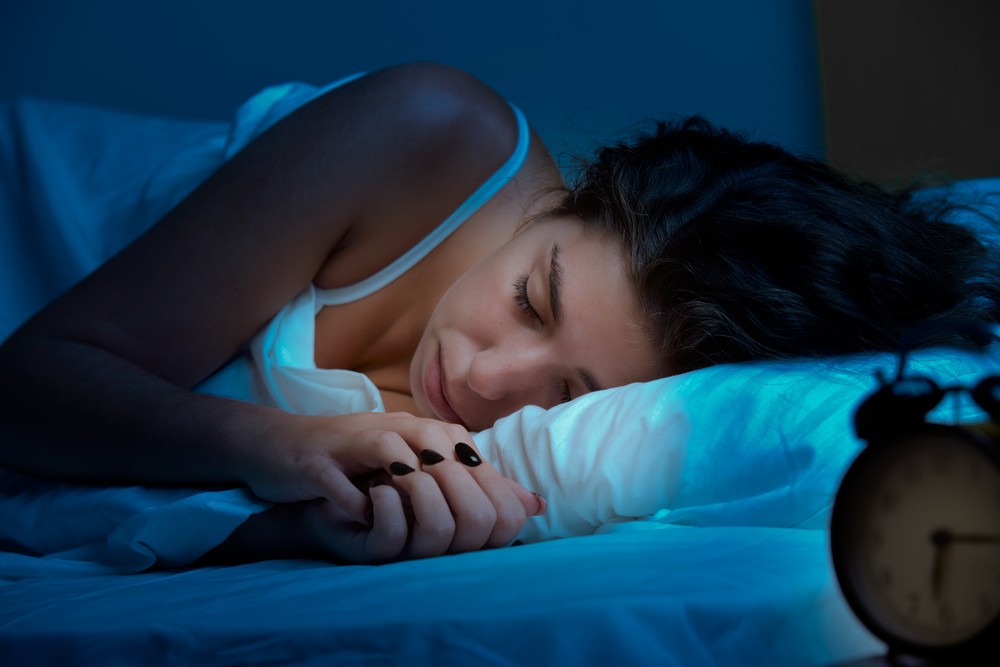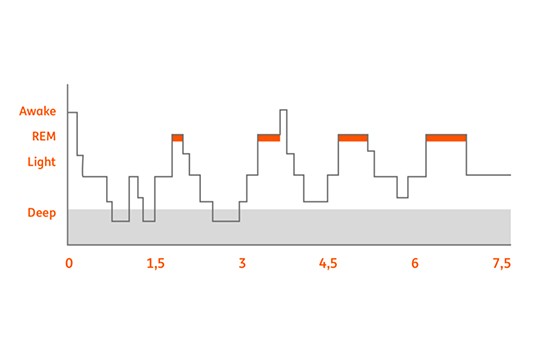The Architecture of Sleep
When you sleep well, your brain and body go through a number of cycles. In each cycle you follow distinct stages of sleep where muscles relax, brain waves decrease and dreams begin.

Scientists divide sleep in two types: Rapid Eye Movement (REM) and non-REM sleep (which consists of three stages). Let’s start with the latter, because this is the first stage of sleep.
Non-REM sleep
Stage 1: Falling asleep undisturbed, you enter into light sleep. Your body temperature begins to drop and your muscles relax as you start to drift into this first stage of sleep.
Stage 2: After 5 to 10 minutes you enter the second stage: the moment you really start to sleep. Your eyes stop moving and your heartbeat and breathing slow down. You spend about half of your nights in this stage of sleep.
Stage 3: After about 35-45 minutes you enter deep sleep, or slow wave-sleep. This is your most restorative form of sleep. Breathing becomes more regular, blood pressure falls and pulse rate slows to about 20 to 30% below daytime average.
During this stage your pituitary gland releases a substantial amount of growth hormone, which stimulates tissue growth and muscle repair. If your body does not get enough slow wave-sleep to restore itself, the ageing process will accelerate as a result.
REM sleep
During REM (Rapid Eye Movement) sleep, your eyes move quickly in different directions. You enter this phase approximately every ninety minutes. During REM sleep you dream, your body temperature and your heart rate rise, breathing and blood pressure increase up to daytime levels and your brain activity is high – your brain literally heats up. During REM sleep, you process the previous day’s events, solidifying experiences into permanent memory.
By getting enough REM sleep, your brain organizes neural networks essential for remembering, learning, solving problems and overall cognitive performance. To benefit the most from the essential functions of REM sleep, it’s important that you don’t cut down on your sleep time. REM periods become progressively longer, the longer you sleep.
Quality is Key
Sleeping long enough is one thing, waking up fully energized is another. In order to get the most out of your sleep, a good part of it needs to be ‘high-quality sleep’. You need a substantial amount of both deep sleep (non-REM) and dream sleep (REM) to fully recover. Even though sleeping longer will increase your chances of getting enough of these important types of sleep – especially REM, as it occurs more in the second part of the night – it does not guarantee that you will actually get it.
Most people need at least seven hours of sleep to get enough of high-quality sleep. How much time you need to get enough of this depends on what researchers call sleep efficiency.
Sleep efficiency varies from person to person, and apart from the fact that it decreases as you get older, it can be influenced by many things. Alcohol, caffeine, background noise, frequent bathroom stops or a list of medical conditions can prevent you from going through the most restorative phases of your sleep. Fortunately, there are quite a few things you can do to increase your sleep efficiency, allowing you to get more recovery out of the hours spent asleep.



